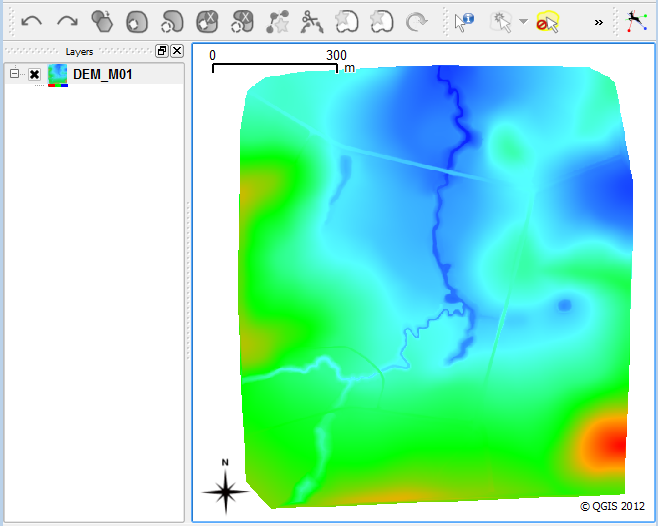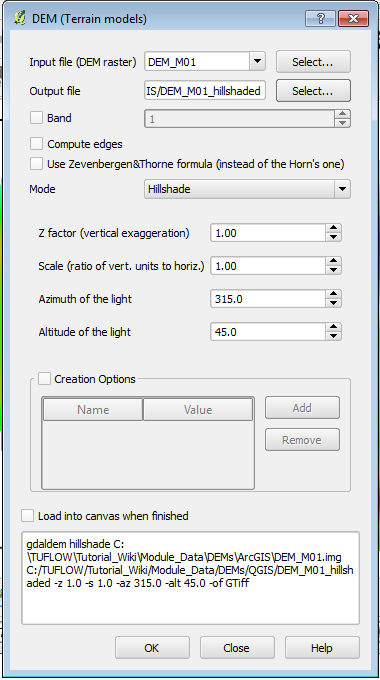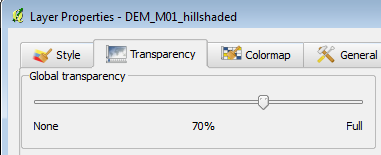QGIS Relief Shading: Difference between revisions
Jump to navigation
Jump to search
Content deleted Content added
Created page with "<ol> ==Method== Relief shading gives a DEM a more "3D" look. To use relief shading in QGIS, follow the steps outlined below:<br> <li>Ensure that you have your DEM open in QGIS, ..." |
Chris Huxley (talk | contribs) No edit summary |
||
| Line 17: | Line 17: | ||
<br> |
<br> |
||
</ol> |
</ol> |
||
<br> |
|||
<br> |
|||
{{Tips Navigation |
|||
|uplink=[[QGIS_Tips | Back to QGIS Tips And Tricks]] |
|||
}} |
|||
Latest revision as of 14:40, 22 June 2021
- Ensure that you have your DEM open in QGIS, and have an appropriate colour map shading. The DEM without relief shading is shown below.
- From the menu items select - Raster >>> DEM (Terrain Models).
- Select the input DEM, and an output filename (a new hillshading DEM will be created). Make sure the Mode is set to Hillshade.
- Open the output file. Position this in the Layer Control section above the DEM, and set a transparency for the layer.
- The DEM should now have relief shading, the relief shaded DEM is shown below.
Method
Relief shading gives a DEM a more "3D" look. To use relief shading in QGIS, follow the steps outlined below:




| Up |
|---|